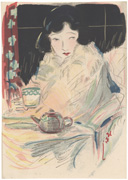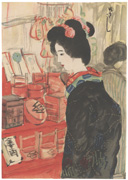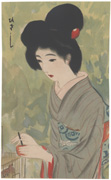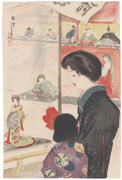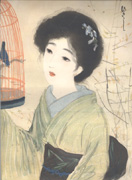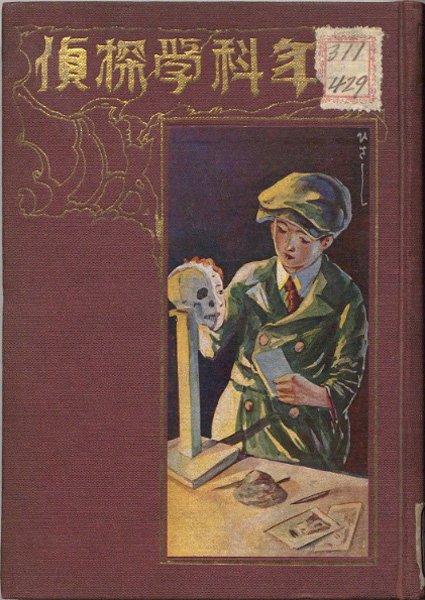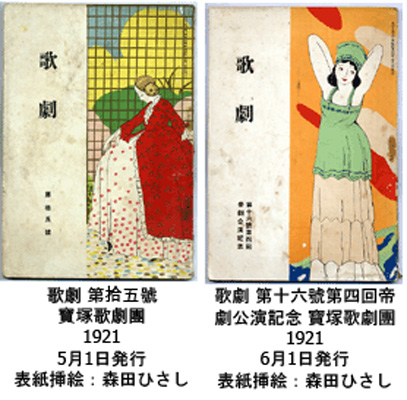Woman in Brown Kimono (untitled), c. 1915-early 1930s
IHL Cat. #1633
Woman in Stripped Kimono Carrying Furoshiki (untitled),
c. 1915-early 1930s
IHL Ccat. #1636
IHL Cat. #1637
Woman and Caged Bird (untitled), c. 1915-early 1930s
IHL Cat. #1638
Modern Woman Looking in Shop Window Before the New Year (untitled), c. 1915-early 1930s
IHL Cat. #1639
IHL Cat. #1640
Woman at the beach (untitled)
c. 1915-early 1930s
IHL Cat. #2388
Reishō, 1918
IHL Cat. #2401a
-intentionally left blank-
-intentionally left blank-
Biographical Data
Biography
Dangerous Beauties and Dutiful Wives: Popular Portraits of Women in Japan, 1905-1925, Kendall Brown, Dover Publications, Inc., 2011.
Morita served as the art director for the all-girl Takarazuka Revue 宝塚歌劇 at the Hibiya Theater in Tokyo and is credited with the stage design for the very popular 1927 revue Mon Pari (Mon Paris). His work as art director was lucrative and allowed him to construct a Western-style building in the so-called Ikebukuro Montparnasse, an area on the edge of Tokyo whose cheap rents after the 1923 attracted many artists and was to become an avant garde cultural community.
There are no known woodblock prints designed by the artist. His designs for popular magazines and serialized novels were generally mass reproduced by lithography or by offset printing. As stated by Kendall Brown in Dangerous Beauties and Dutiful Wives, “These technologies were not simply expedient means of mass production, but, in fact, were part of a visual revolution that included the desire to reproduce perfectly the images crated by designers, the skilled artistry of master printers, and the creation of luxury prints meant to function as defacto works of art.”
1 Literarische Bilderwelten des 20. Jahrhunderts: Internationale Buchgraphik in Europa und Übersee aus der Sammlung v. Kritter : Wort und Bild als Medium zeitgenössischer Kulturen, Inge von Kritter, et. al., Bad Homburg vor der Höhe : U. v. Kritter, 1993-2009, p. 28.
 ひさし |  |  |  |  | |
last revision:


